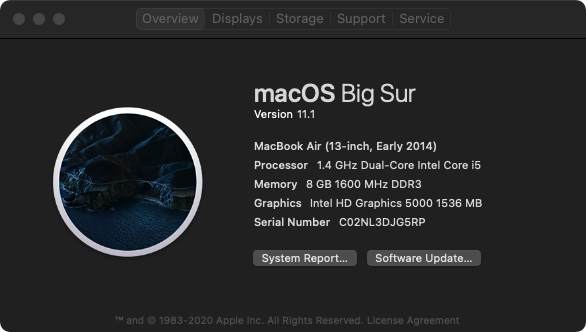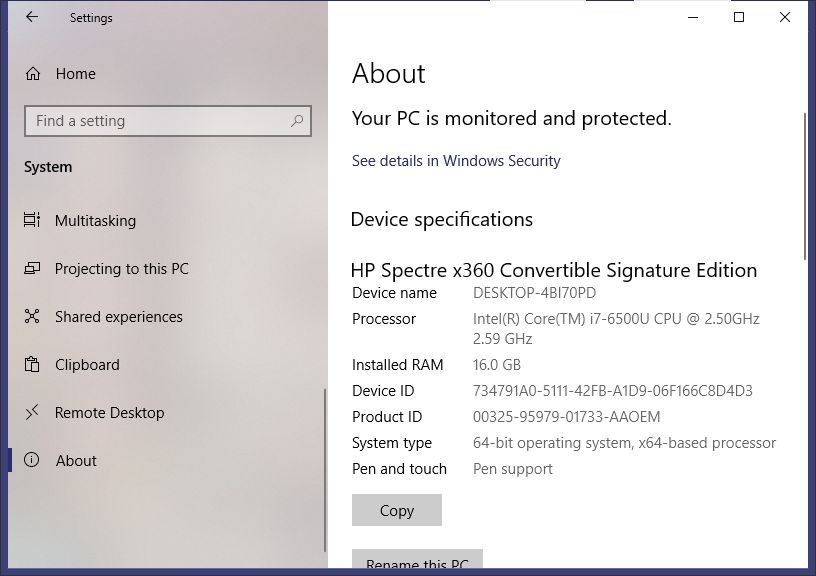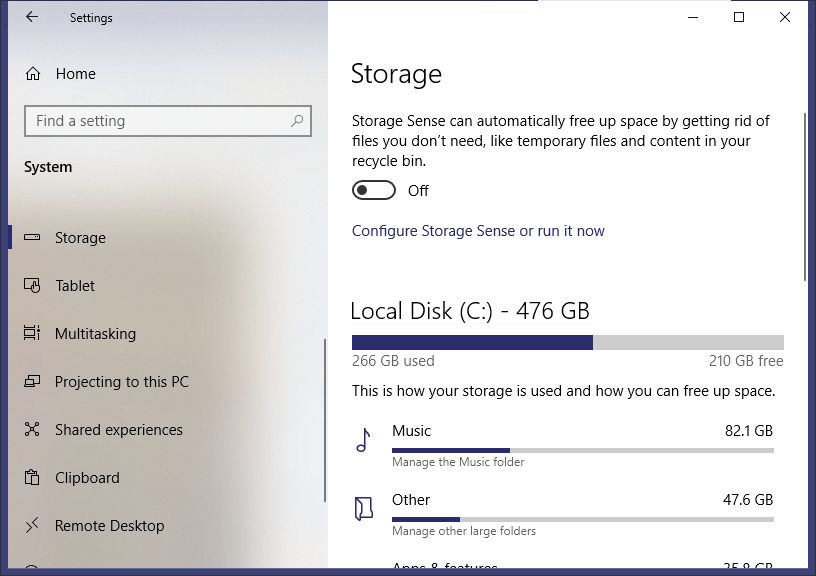ALAN ZISMAN ON
TECHNOLOGY
My computer's running slow - is it time to get a new one?
By Alan Zisman © 2021-01-20
Hungarian translation by Elana Pavlet ~ Kazakh translation by Alana Kerimova
I know a lot of people who bought new Macs or Windows laptops or desktops sometime between 2011 and 2014 or so.
Pretty often, I hear "My computer's running slow - is it time to get a new one?"
A while back, it would have been an easy question to answer - many people and businesses were routinely upgrading their hardware every 3 years or so; trying to use a 7-10 year old computer online would have been hard to imagine.
Now, though, not so much.
My friend Barry, for instance, got himself a new MacBook Air in 2013 - Intel Core i5 CPU, 8 GB RAM, solid state drive (SSD). Apple supports it with the company's current Mac OS version and it does what he needs, quickly enough.
What we really need to think about is what do people mean when they say their computer feels like it's running slow.
On the one hand, computers do seem to get slower over time. As more software gets installed, more programs want to load pieces of themselves at startup, slowing that down. Many users clutter their computer Desktops with icons - which slows the system down. An almost-full hard drive will slow everything down.
Freeing up space on the drive and a fresh operating system (and applications) re-install can bring things back to that new, out of the box experience.
At the same time, though, our perception of acceptable speed has changed. While Barry's 2013 MacBook Air came standard with quick SSD storage, most systems of that era - particularly at lower and middle price points - used traditional hard drives. Larger capacity solid state drives were particularly expensive, and as a result many buyers opted for more economical hard drives.
Since then, though, many of us are using smartphones and tablets for a lot of our online experiences - and taking for granted the solid state performance of those devices. When we turn on our older laptops or desktops, the slow boot time and application start-up time that comes from reading large amounts of data from a traditional hard drive feels slower than it used to - even if it's the pretty much the same amount of time it took when the computer was new.
The computer may not be running any slower, but our expectations have sped up.
SSD prices have dropped dramatically - it's relatively easy to replace the drive in almost all desktop systems and in many (though not all) laptops - rather than buying a new system, replacing your hard drive with a speedy SSD may be an affordable way to give that older system a burst of speed. Check in with US memory/SSD vendor Crucial.com and click on their link to 'Scan computer' to get a sense of your options.
But then again, what is someone really saying when they say their computer is running slow? Another friend, Ruth, said that about her 2012 iMac. I asked her to check how much memory (RAM) was on the computer, how much free space was on her drive, whether it was an SSD or a traditional hard drive.
But it turned out that what she really was reporting was that when she was online, websites were taking forever to load. And since that's most of what she was doing with her computer, it felt like the computer had slowed down.
The solution? She unplugged her cable modem, waited a moment and plugged it back in. After a few moments, all the lights on the modem came back on, and her computer was fast again!
The problem wasn't the computer at all! (And if Ruth had run out and bought a new computer, it would have been just as slow, at least until she restarted the cable modem).
If your computer feels sluggish here are some things to check:
Older blog postings....
My computer's running slow - is it time to get a new one?
By Alan Zisman © 2021-01-20
Hungarian translation by Elana Pavlet ~ Kazakh translation by Alana Kerimova
I know a lot of people who bought new Macs or Windows laptops or desktops sometime between 2011 and 2014 or so.
Pretty often, I hear "My computer's running slow - is it time to get a new one?"
A while back, it would have been an easy question to answer - many people and businesses were routinely upgrading their hardware every 3 years or so; trying to use a 7-10 year old computer online would have been hard to imagine.
Now, though, not so much.
My friend Barry, for instance, got himself a new MacBook Air in 2013 - Intel Core i5 CPU, 8 GB RAM, solid state drive (SSD). Apple supports it with the company's current Mac OS version and it does what he needs, quickly enough.
What we really need to think about is what do people mean when they say their computer feels like it's running slow.
On the one hand, computers do seem to get slower over time. As more software gets installed, more programs want to load pieces of themselves at startup, slowing that down. Many users clutter their computer Desktops with icons - which slows the system down. An almost-full hard drive will slow everything down.
Freeing up space on the drive and a fresh operating system (and applications) re-install can bring things back to that new, out of the box experience.
At the same time, though, our perception of acceptable speed has changed. While Barry's 2013 MacBook Air came standard with quick SSD storage, most systems of that era - particularly at lower and middle price points - used traditional hard drives. Larger capacity solid state drives were particularly expensive, and as a result many buyers opted for more economical hard drives.
Since then, though, many of us are using smartphones and tablets for a lot of our online experiences - and taking for granted the solid state performance of those devices. When we turn on our older laptops or desktops, the slow boot time and application start-up time that comes from reading large amounts of data from a traditional hard drive feels slower than it used to - even if it's the pretty much the same amount of time it took when the computer was new.
The computer may not be running any slower, but our expectations have sped up.
SSD prices have dropped dramatically - it's relatively easy to replace the drive in almost all desktop systems and in many (though not all) laptops - rather than buying a new system, replacing your hard drive with a speedy SSD may be an affordable way to give that older system a burst of speed. Check in with US memory/SSD vendor Crucial.com and click on their link to 'Scan computer' to get a sense of your options.
But then again, what is someone really saying when they say their computer is running slow? Another friend, Ruth, said that about her 2012 iMac. I asked her to check how much memory (RAM) was on the computer, how much free space was on her drive, whether it was an SSD or a traditional hard drive.
But it turned out that what she really was reporting was that when she was online, websites were taking forever to load. And since that's most of what she was doing with her computer, it felt like the computer had slowed down.
The solution? She unplugged her cable modem, waited a moment and plugged it back in. After a few moments, all the lights on the modem came back on, and her computer was fast again!
The problem wasn't the computer at all! (And if Ruth had run out and bought a new computer, it would have been just as slow, at least until she restarted the cable modem).
If your computer feels sluggish here are some things to check:
- Is everything slow or is it just when you're online? If it's online, see if the sluggishness is only with a certain website or everywhere. Just a single website? Try using a different web browser to access it. Maybe the problem's with the website, not with your system at all.
- If everything online seems slower than usual and you have another device, perhaps a tablet or another computer, see if the Internet is slow on the other device. If so, the problem may be with your Internet connection. Try unplugging your modem, waiting a moment, then plugging it back in. Be patient - it will take a few moments to reconnect with your Intenet Service Provider (ISP). If it's still a problem, try again, and wait 5 minutes or so before plugging it back in. If the problem has not cleared up, contact your ISP - the problem may be on their end. (In one case, my ISP didn't think the problem was on their end, but offered to replace the cable modem. That solved my problem).
- If it feels like your computer is running slower than it used to - even when you're not online - try shutting down and restarting the computer. Shut down/restart can cure problems with all sorts of devices - it's always worth a try. Just be sure that your device is actually turned off - a black screen may just mean that you've turned off the screen or put the system 'to sleep', not actually turned it off. Be sure you know the difference!
- If it still feels slow,
check its specifications. How much memory (RAM) is installed? 4 GB was
plenty a decade ago, and now it's okay for a lot of everyday activities
but more is better. How much free space is on your drive? Do you have
an SSD or a traditional hard drive installed?
If you've got a Mac, click on the little Apple icon in the top-left corner - from the drop-down menu, select About This Mac. The main tab will tell you how much memory is installed; the Storage tab will report on your drive. (In the second image below, 'Flash Storage' is Apple-speak for SSD.

Windows 10 users can click on the Start Button, then on the gear-wheel icon to open Settings. Click on System, scroll down the column on the left to About. See Installed RAM for how much memory is on your computer. Click on Storage (on the left) to see the report on your SSD or hard drive - though this doesn't tell you whether you've got a traditional hard drive or an SSD:

Alternatively, run the Crucial scan (Windows or Mac) to see a report on what's on your system - and some estimates on the options and cost of upgrading - good to know even if you don't choose to buy anything from Crucial.com. - If you're handy, check out how easy - or difficult - it would be to upgrade the RAM or replace the internal drive on your Mac or PC. The website iFixIt.com has a series of guides for many computer models - and other devices - each is rated for difficulty. For instance, replacing the drive on my HP Spectre x360 laptop is rated 'easy'. But not every job will be easy. For example, if you own one of the popular MacBook Air models, your RAM and SSD are soldered onto the motherboard and not replaceable.
Older blog postings....
| About This Blog... I've been writing about computers, software, Internet and the rest of technology since 1992, including a 17 year (1995-2012) stint as 'High Tech Office' columnist for Business in Vancouver. This blog includes thoughts on technology, society, and anything else that might interest me. Comments, emailed to alan@zisman.ca are welcome - and may be published in whole or part. You can follow me on Facebook for notice of new blog postings. |
 |